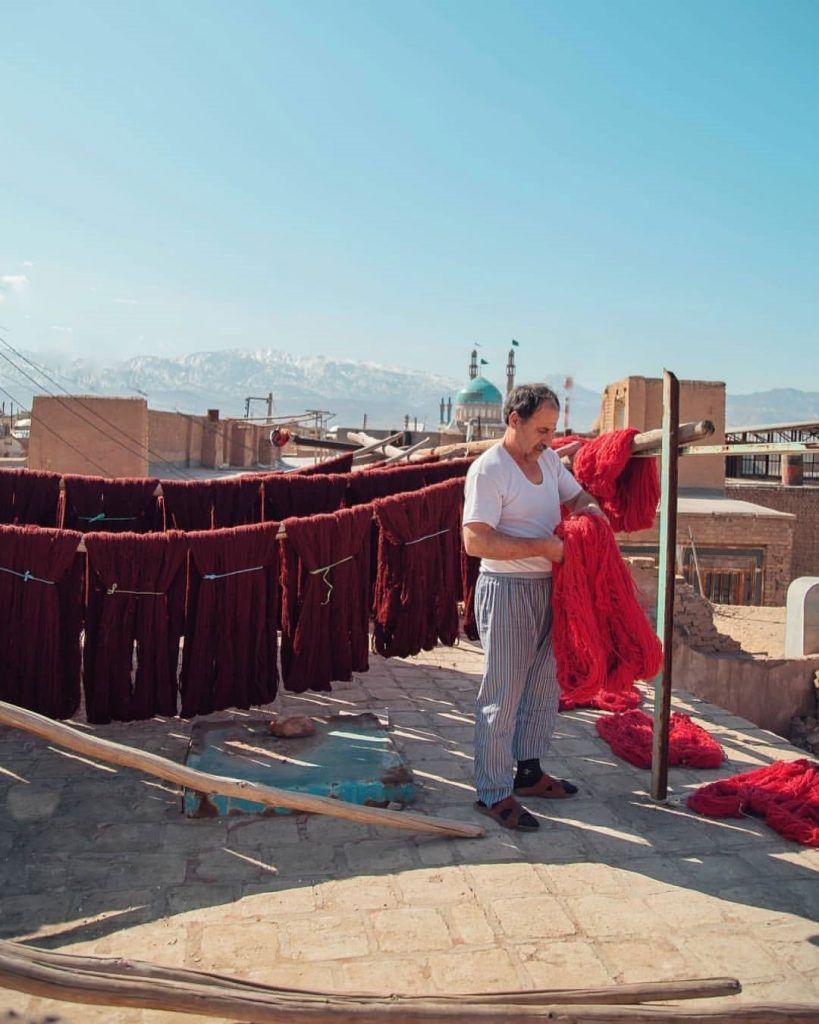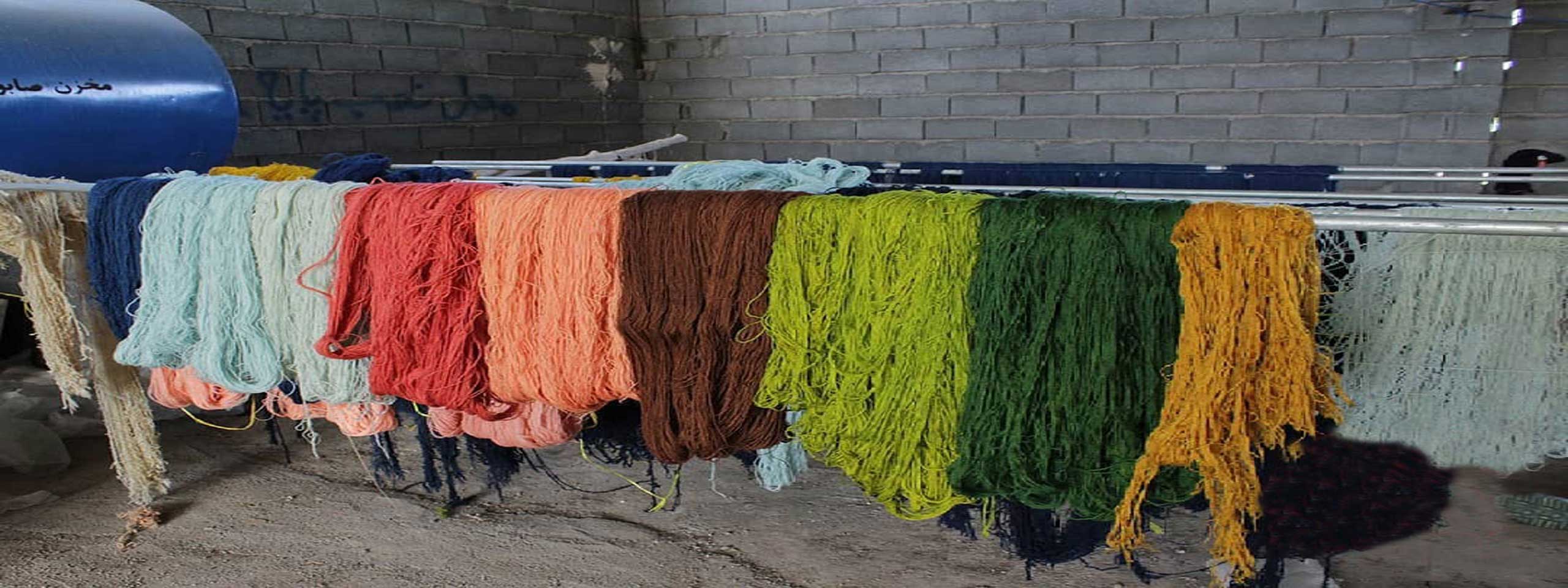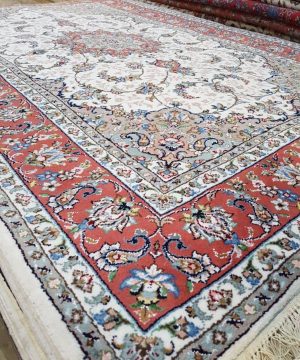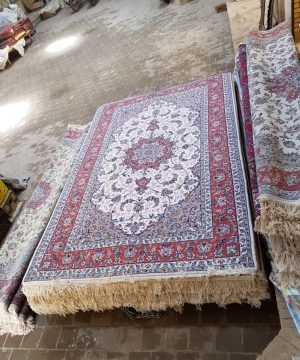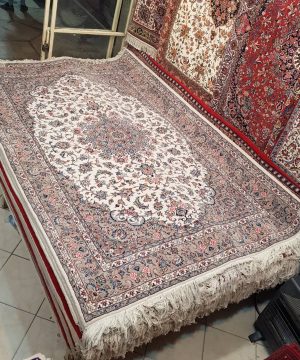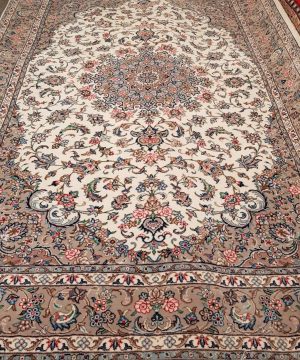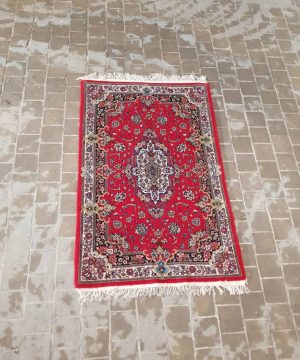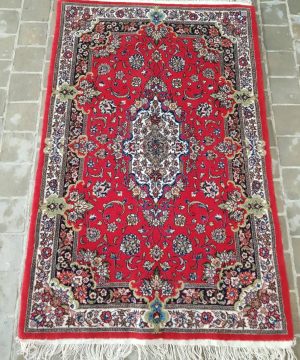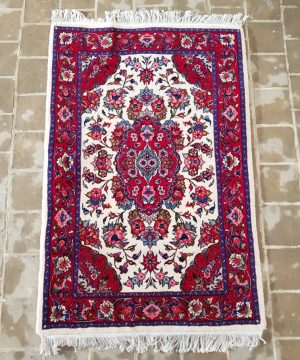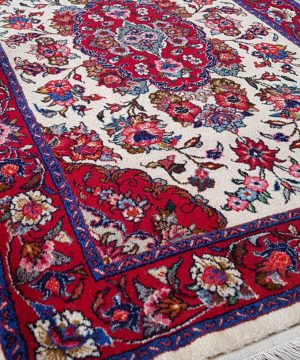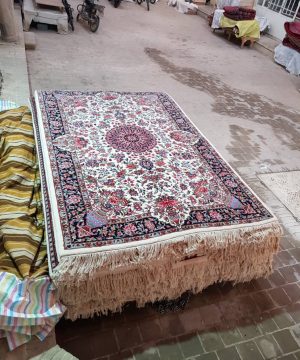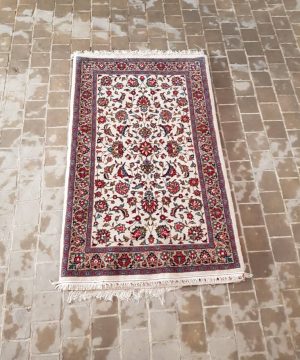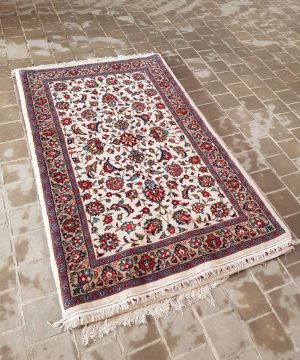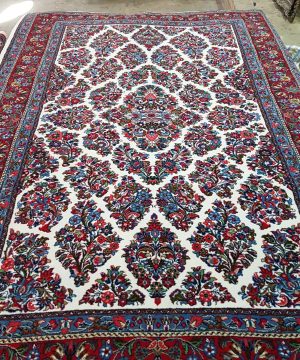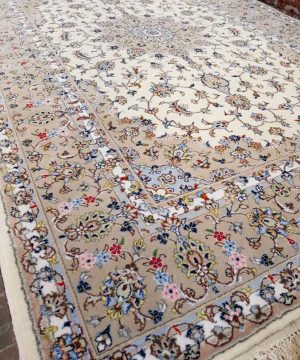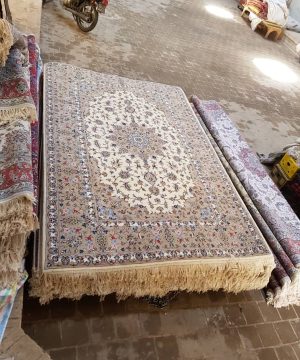The main 2 types of colors in Persian carpets? natural and artificial colors
In this article, we examine the types of colors in Persian carpets used in carpet weaving. In terms of color type, colors in Persian carpets are divided into two categories: natural colors and artificial colors:
Artificial colors in persian carpets
Dyes are made from chemical and synthetic materials. These colors are divided into two categories: Ink colors and Chrome or Serrated colors:
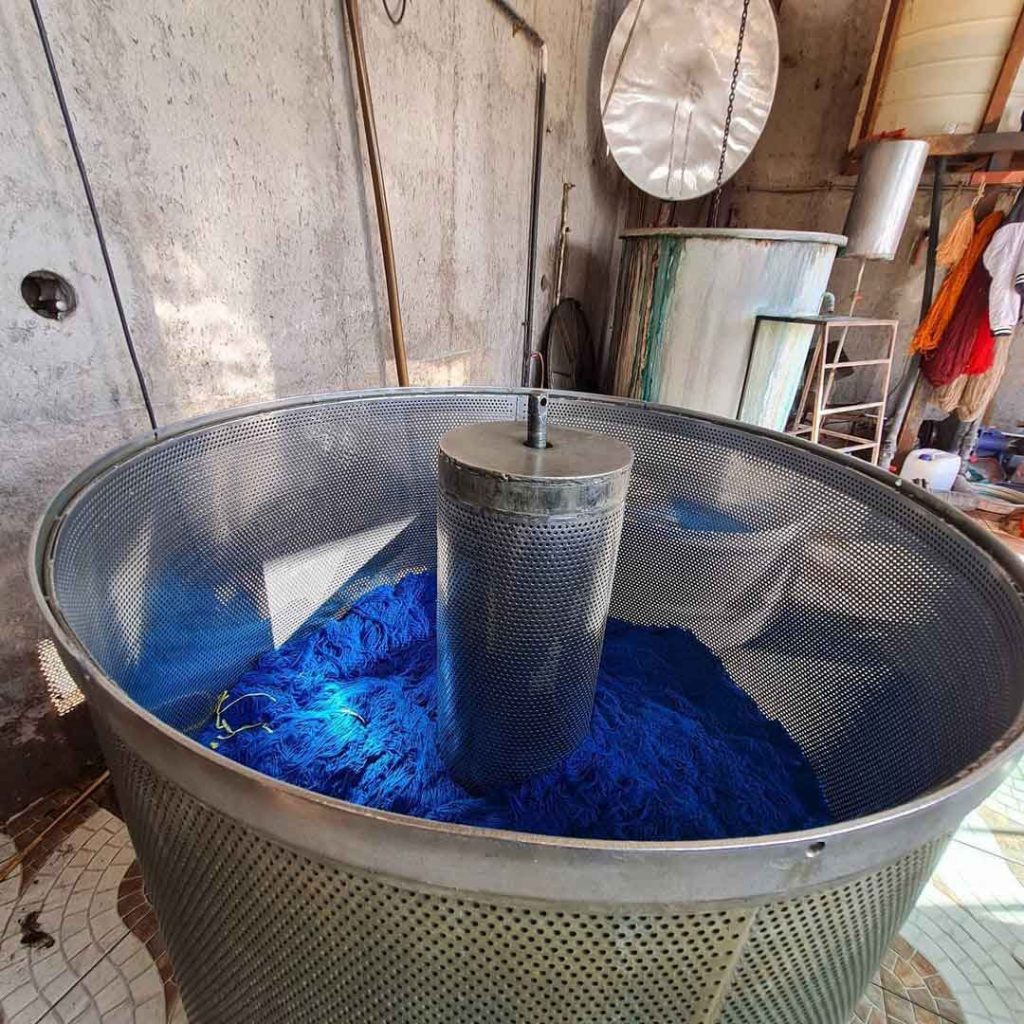
Ink or aniline dyes or volatile dyes colors in Persian carpets
This group of dyes is obtained from aniline, which is cheap and volatile and is known as ink dyes in the tradition of carpet weaving.
Ink colors in Persian carpets are substandard and wear out in the face of washing and light and lose their stability. Due to instability, it is a serious danger for Persian carpets that their use should be banned, but for reasons such as cheapness, basic attractiveness, easy accessibility, only short time for dyeing and lack of awareness of the benefits of natural dyes have been welcomed.
Chrome or serrated colors in Persian carpets
They are a group of synthetic dyes, and because chromium (potassium bichromate) is used to stabilize and clarify the resulting dyes, they are also called chrome dyes. The use of these colors is similar to natural colors and they have good stability against washing and light. These colors have a sharp effect on new carpets and become dull and withered on old carpets.
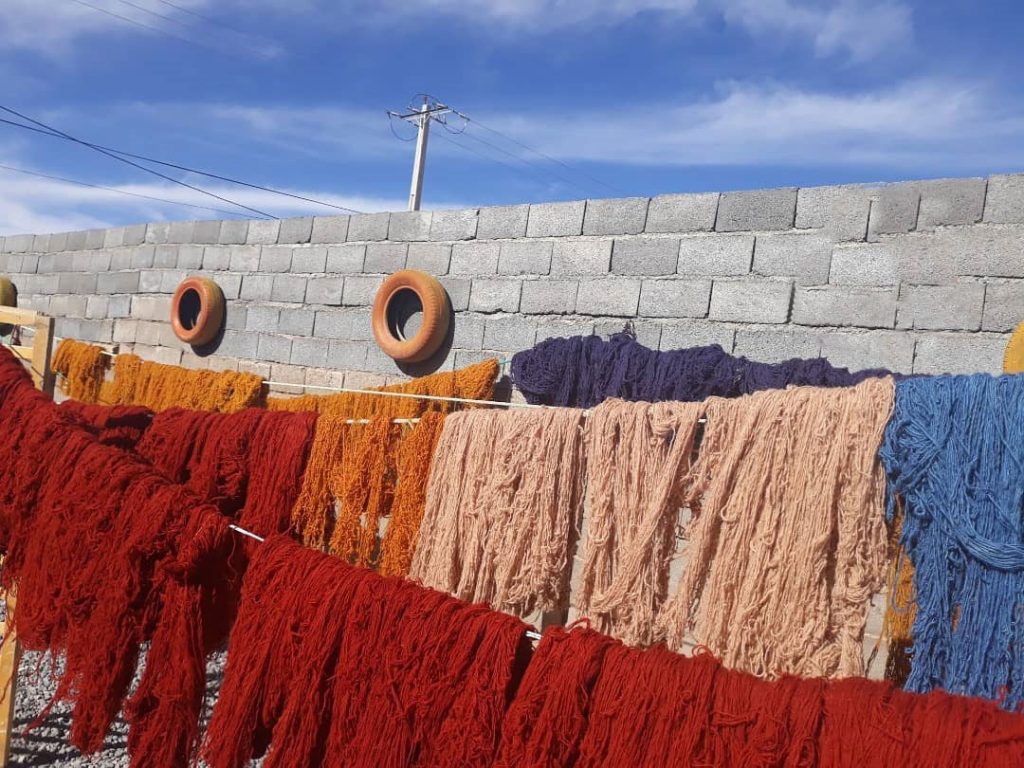
Natural colors in Persian carpets
Paints are said to be of plant, animal, and metallic origin, and dyeing with them requires a lot of time, precision, and skill. Natural dyes are divided into 3 groups: plant, animal, and metallic dyes.
Plant dyeing materials
Rhubarb (Ranas): It is a plant that grows in most areas, but in recent years it is cultivated in Kerman, Yazd, and Mazandaran. The pigment is obtained from its root, the root of which is thick, fleshy, and red in color. The name of the pigment is Alizarin.
rhubarb has the maximum coloration between the ages of 7-3 years, which is obtained from 3-year-old Ronas, brick red, and from 7-year-old Ronas, dark red, in other words, the color strength of Ronas root is directly related to the length of time it stays in the soil.
After the rhubarb root is removed from the ground, it is dried and ground and rounded and used for dyeing.

Walnut bark: Walnut is a large tree and has very strong wood.
The green skin of the fruit of this plant is used for dyeing. In this way, as soon as the fruit ripens, it is separated and dried, and used for dyeing. This skin only gives cream, camel, and brown colors in certain proportions, but in combination with materials such as black alum, it can be obtained in black, and in combination with iron sulfate, it gives gray and black.
Grape leaves: The color of the grape leaves is yellow. But raw materials are also used to obtain Grassy green, dark green, and lemon yellow.
Baqam: It is a tall, redwood that uses its red color. The dye of this plant is hematin and they get the red color that is used for dyeing wool and silk. Used to prepare purple and red colors.
Bozqanj: The skin is a type of mountain pistachio that because it has a lot of tannins, it is used as a toothpick to fix the red color of the seed, but it is also used to prepare gray and black colors.
Jaft: The bark under the oak tree is called the bark of which is rich in Mazuji materials. Raw materials are used to prepare yellow and brown colors.
Indigo (azure): It grows in tropical regions such as the south of the country and Baluchistan and is a raw material for preparing blue colors and colors such as green, crimson and the best time to get the color is the first year of planting and the main part of the color of its leaves Obtained. Today, indigo dyes are substituted for chemical or industrial indigo.
Saffron: This plant is cultivated in Ghaenat, Torbat, Kashmar, and Estahbanat and it has a yellow color. However, due to the high cost of this material, it is less used in dyeing.
Blackberry: It is a raw material to get purple and red colors.
Straw: It is used to get the yellow color.
Gandel: This plant grows in the central regions, especially Bakhtiari, and it is used to prepare a bright yellow color.
Sumac: This plant, which is also consumed orally, has a large number of masochistic substances.
It is used to obtain brown to brown colors and, when mixed with ferrous sulfate, gives a dark purple-brown color.
Wasmeh: It is one of the raw materials for preparing the blue dye, the color of which is obtained from its leaves.
Safflower: The pigment is present in the flower and the raw material for the preparation is reddish yellow.
Cherry: The fruit of the cherry tree is used to obtain a red color.
Aspergillus: One of the best dyeing materials used to prepare yellow dye and goes in the form of cars, and asparagus flowers have the most color and the roots have the least dye.

Animal dyeing materials
Red-seeded: It is a ladybug-like insect that lives on fig trees, this insect secretes a gum-like substance that covers and hardens branches and insects, the gum and insect are then removed from the tree and the internal insect is suffocated with materials such as boiling water or gypsum powder, dead insects are then dried and pounded and used to produce floral to dark red colors. This dye is expensive but its quality is high and the colors obtained from it are also called lacquer.
Metallic colors in Persian carpets
As the name implies, these dyes are derived from metallic compounds and are found naturally, such as iron oxide (yellow and red ocher), yellow lead oxide (stone carcass), azure blue, Prussian blue.
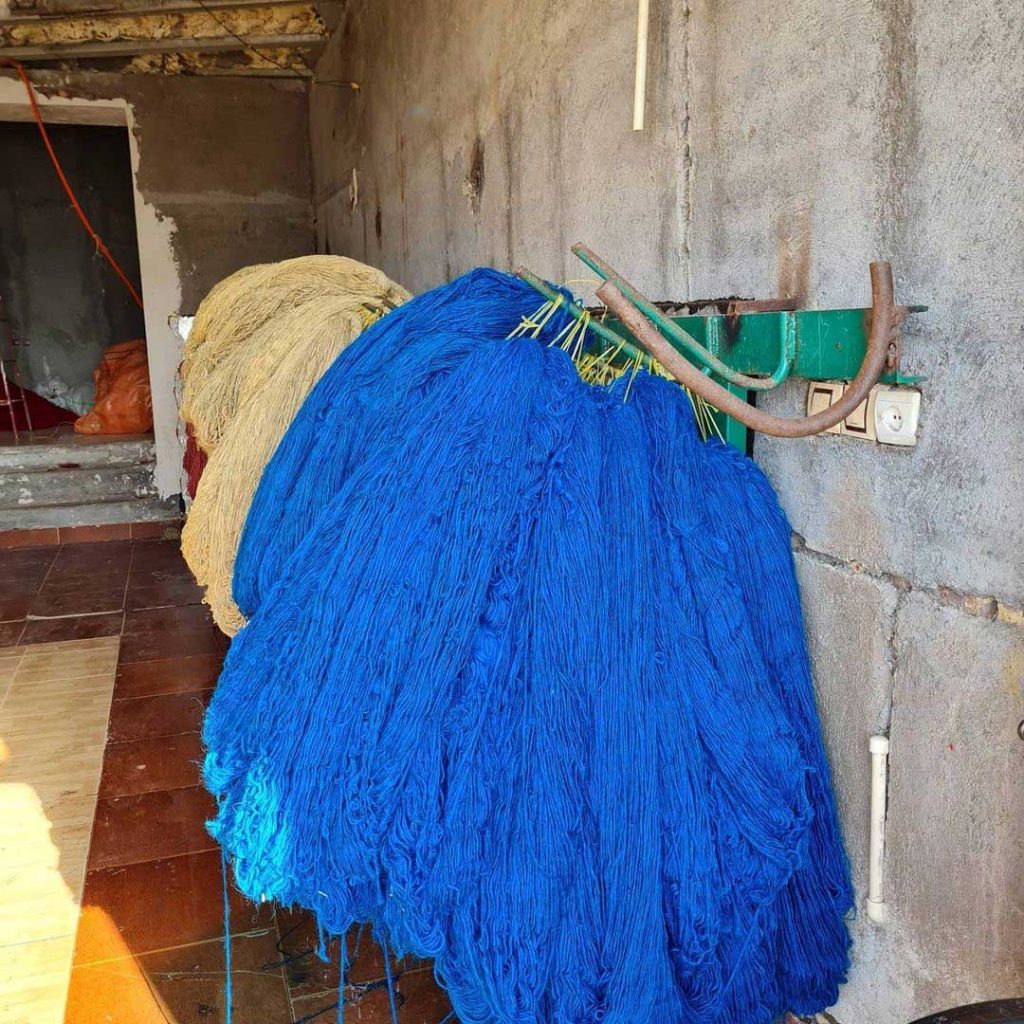
The meaning of colors in Persian carpets
The colors in oriental rugs play a major role in symbolism and storytelling. Do not forget that the symbols on the carpets are important. In this article, we want to examine the meanings and symbolism of colors together. Color in Persian carpets has a lot to do with how they have a psychological effect on our living environment. Therefore, choosing the color of the carpet according to our feelings is very important. Each color used in the Persian carpets has a special meaning. In the following, we will mention some meanings of colors in Persian carpets.
Red means wealth, luck, beauty, happiness, and courage.
Orange is known for humility, sacrifice, and piety.
Yellow or gold indicates the sun, happiness, vitality, power, and wealth.
Green represents hope, heaven, renewal, and spring.
Blue represents truth, life after death, and loneliness. Blue is a very popular color in traditional and modern Iranian carpets.
Purple, although less commonly used in older rugs, represents wisdom, serenity, introversion, and spirituality.
Brown means mother earth and fertility. This color is perhaps one of the most important colors that should be considered in our lives today. Ground coffee is a great choice to create a natural floor feeling. Walking on a brown carpet makes you feel like you have stepped on the ground.
Black represents death and destruction in Persian carpets. For this reason, black color was not used much in traditional Persian carpets. Today, the color black used in modern carpets have positive meanings such as “emptiness” or “mystery”.
White symbolizes innocence, purity, and purity. White is the most prominent color used in traditional woven carpets in Nain city of Yazd province. Knowing these meanings and paying attention to them, you can definitely choose a carpet that is suitable for your feelings and interests. Just be a little careful and buy with this guide.
